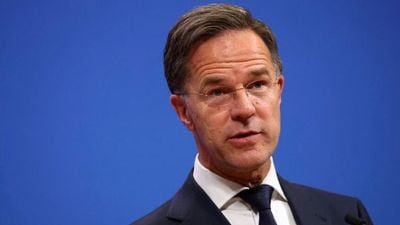A day after India and Pakistan announced a ceasefire, the Opposition Congress, focusing on the role played by the US in bringing about a truce, sought details of the ceasefire and asked the government to take the country into confidence.

The Congress, which had extended unequivocal support to the government for any action it took against the perpetrators of the terror attack and their handlers, now senses an opportunity to ask questions of the government on the “abrupt” ceasefire announcement and the extent of Washington’s intervention. Besides, it wants to know whether New Delhi received any “concrete assurances from Pakistan about dismantling the terror infrastructure” which led to the ceasefire.
Story continues below this ad
P Chidambaram, senior leader of the Congress and a former Union Minister, said, “The DGMO, Pakistan called DGMO, India at 3.35 pm and proposed a ceasefire, and India agreed. President Trump tweeted the announcement of a ceasefire at 5.25 pm… A few minutes later, US Secretary of State Marco Rubio tweeted that India and Pakistan will meet for talks at a ‘neutral site’. India’s Foreign Secretary made a brief statement at 6 pm. The timeline of the events/announcements is intriguing. India’s Foreign Secretary made no reference to President Trump or Secretary Marco Rubio or a forthcoming meeting or a neutral site. That is intriguing too.”
“How can the DGMOs agree to a ceasefire without clearance from the top? What we can deduce is that there was a direction from the executive leadership to the DGMO to agree to a ceasefire. So what transpired,” another senior leader said.
Many Congress leaders pointed out that there have been interventions by the US in the past whenever tensions between India and Pakistan came to a flashpoint, but Washington never made those backchannel efforts public. In that sense, the ceasefire, they said, could have been choreographed better.
Senior Congress leader Manish Tewari said the 2021 ceasefire agreement between India and Pakistan announced by the two DGMOs too had a mention that the two sides agreed to “address each other’s core issues and concerns which have the propensity to disturb peace and lead to violence”.
Story continues below this ad
“So this formulation was there even in the joint statement of 2021. What is interesting about the statement which US Secretary of State Marco Rubio has put out is that there seems to be an ostensible hyphenation between ceasefire and talks on a broad range of issues at a neutral site. So this neutral site is the added dimension if you want to build on to the 2021 agreement itself. This is what the government needs to explain. What is the understanding or otherwise which has been or has not been arrived at between India, Pakistan and their own interlocutors, which led to Marco Rubio or the US State Department putting out this formulation in their May 10 statement,” he said.
What is important, he said, “is whether Pakistan has given any commitment with regard to dismantling the infrastructure of terror.”
“The entire rationale for this coercive deterrence that we are trying to establish is that there should not be a repeat of Pakistan sponsored terror activity from across the border. So ceasefire notwithstanding, what are the concrete assurances about dismantling that terror infrastructure?… Presuming, even if India and Pakistan have decided to talk on a broad range of issues, which was also the formulation in the 2021 ceasefire joint statement, the condition precedent to that must be that Pakistan has to stop exporting terror to India and across the region,” he said.
Addressing a press conference to spell out the party line, CWC member Sachin Pilot said, “This was the first time that the announcement for the ceasefire was made by the US President on social media. And what he wrote on his social media is also worth paying attention to. The new step that we saw to internationalise the issue between India and Pakistan is very surprising.”
Story continues below this ad
“On what conditions the ceasefire has been declared and what is the guarantee that such things would not be repeated, as there is no credibility left after yesterday’s events (violations). How can we believe them (Pakistan) and what is the guarantee that such developments will not happen again,” Pilot asked.
“Kashmir is a bilateral issue and the attempt to internationalise it, I feel, is not proper.” He said it was time for Parliament to adopt again the unanimous resolution passed by Parliament in 1994 to take back Pakistan-occupied Kashmir.
“It should be stated clearly that Kashmir is a bilateral issue and no country, including America, should have a space to intervene in a bilateral issue,” Pilot said.
Stating that Rubio’s mention of a “neutral site” for an India-Pakistan dialogue raises “many questions”, Congress communication head Jairam Ramesh asked, “Have we abandoned the Simla Agreement? Have we opened the doors to third-party mediation?”
Story continues below this ad
“If diplomatic channels between India and Pakistan are being reopened, what commitments have we sought and got?” Ramesh asked.
The Congress continued to recall Indira Gandhi in the context of liberation of Bangladesh in 1971. Senior Congress leader and Chairman of the Parliamentary Standing Committee on External Affairs Shashi Tharoor, however, said that the circumstances of the war of 1971 and the current situation are different.
“…The truth is that the circumstances of 1971 are not the circumstances of 2025. There are differences… This was not a war that we intend to continue. We just wanted to teach terrorists a lesson, and that lesson has been taught. I am sure the government will continue trying to identify and track the specific individuals who did the horrors of Pahalgam,” he said.
While underlining that Indira Gandhi was “in a different league of political leaders… who had the conviction and courage to walk the talk,” Tewari too said, “The strategic reality since the mid 70s has changed very dramatically. So decisions relating to strategic and military policy have to be made on the basis of what is the given reality today.”

































